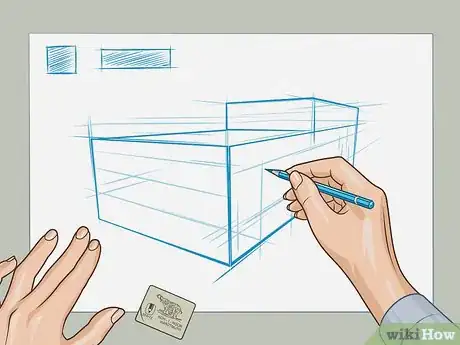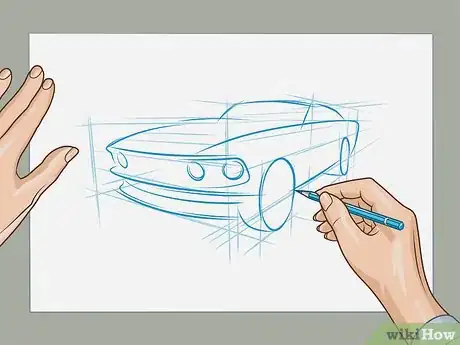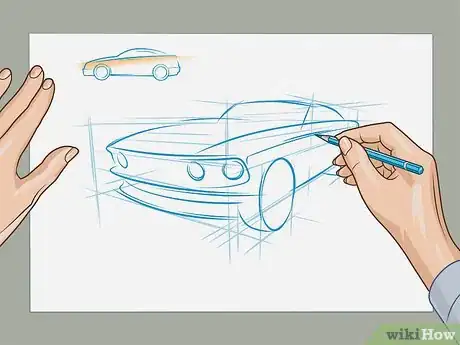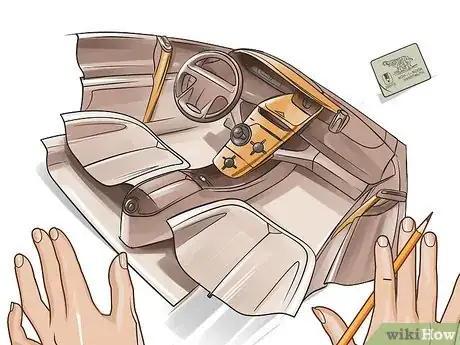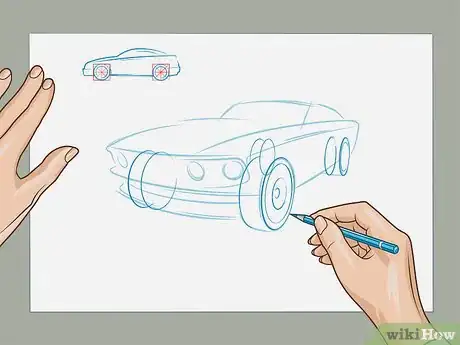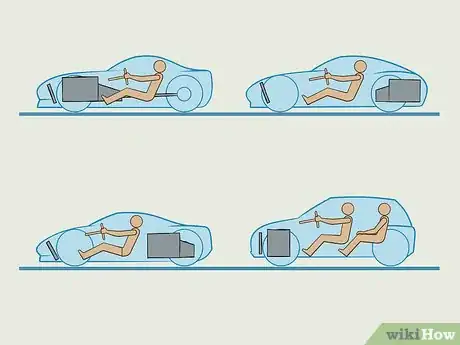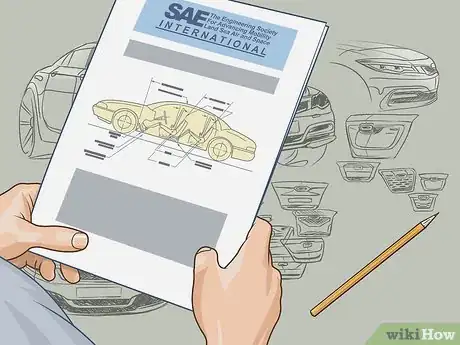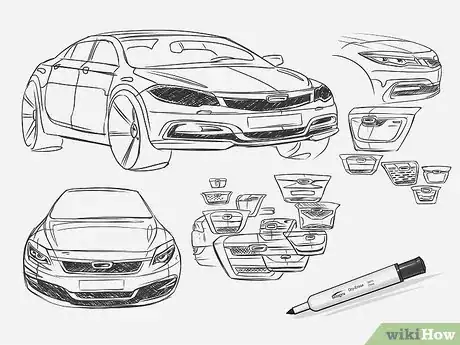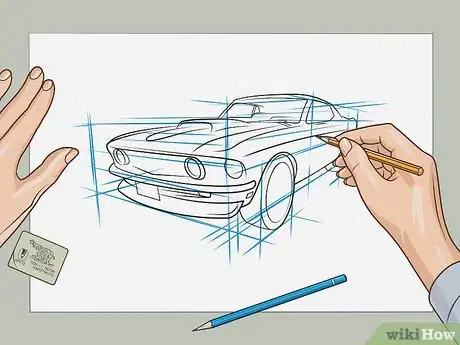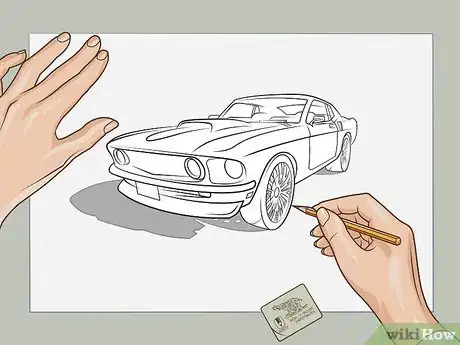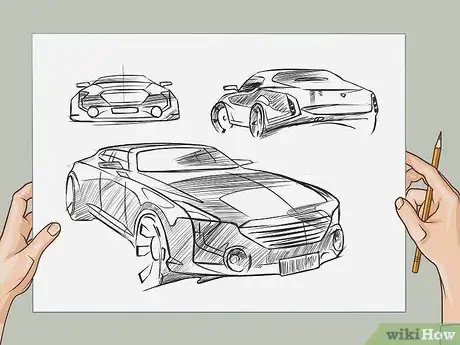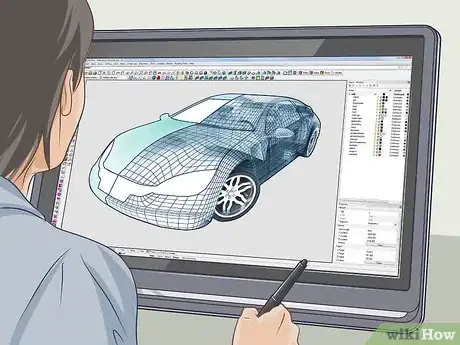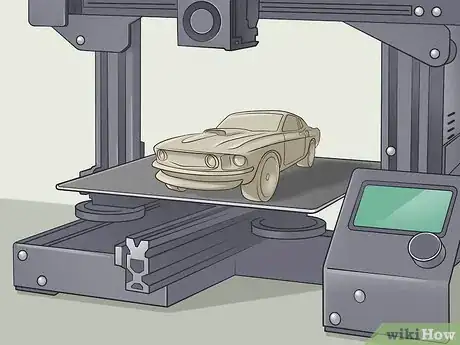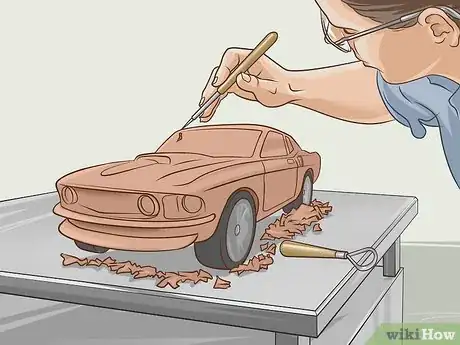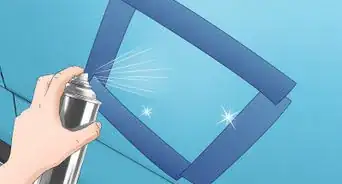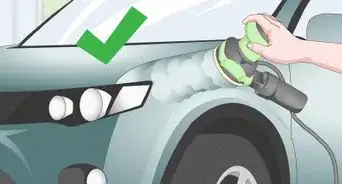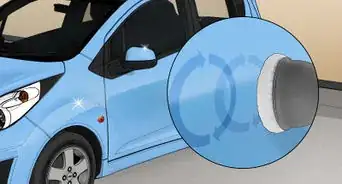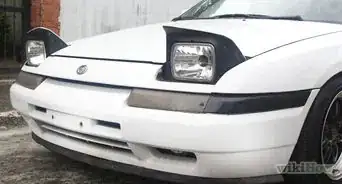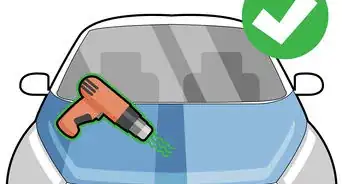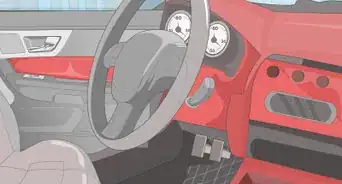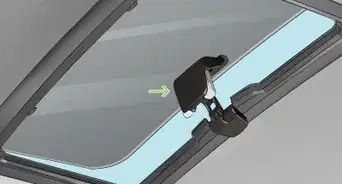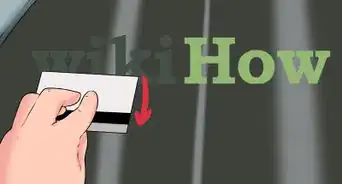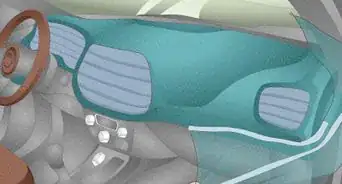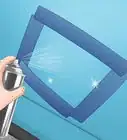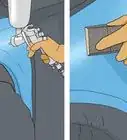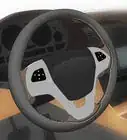This article was co-authored by wikiHow Staff. Our trained team of editors and researchers validate articles for accuracy and comprehensiveness. wikiHow's Content Management Team carefully monitors the work from our editorial staff to ensure that each article is backed by trusted research and meets our high quality standards.
There are 7 references cited in this article, which can be found at the bottom of the page.
wikiHow marks an article as reader-approved once it receives enough positive feedback. In this case, 82% of readers who voted found the article helpful, earning it our reader-approved status.
This article has been viewed 198,919 times.
Learn more...
Cars are not only important transportation technology, but they’re also reflections of beautiful design work. If you love the way cars look and operate, automotive design may be something you’d be interested in! However, it may seem impossible if you don’t know the first thing about design or cars. Fortunately, whether you’re making drawings by hand or on a computer, almost anyone can easily learn how to design a car.
Steps
Following Basic Design Principles
-
1Select the proportions of the car based on car’s main purpose. Draw the rough shape of the car using straight lines and right angles instead of curves. Then, divide this block-shaped car into 3 or 4 squares, with 1 on top and 2-3 on the bottom. Finally, change the size and location of the squares to reflect how the car is intended to be used.[1]
- For example, if the car is meant to be a sports car, the top square should be short and placed closer to the rear axle.
- If the car is meant to have lots of storage space, stretch the top square to cover most of the bottom squares, starting from the rear of the car and moving forwards.
-
2Make sure every surface of the car is curved. This is the first major principle of automotive design and is extremely important for making a car aerodynamic. Most cars are designed with all of the surfaces curved horizontally and with all of these curves running in the same direction.[2]
- Typically, all of the curves will run front to back, since this is the direction of airflow when a car is moving.
Advertisement -
3Design the shoulder of the car to be as horizontal as possible. The shoulder of the car, also known as the “catwalk,” is the surface directly below the side windows. Although the shoulder should wedge slightly upward near the rear of the car, it should generally be perfectly horizontal along the length of the car.[3]
-
4Combine practicality and comfort when designing the interior. Place all the components of the interior, such as the steering wheel, gear shift, and even the air conditioning buttons, within reach of the driver. At the same time, make sure these interior components look stylish and that there’s symmetry to the interior as much as possible.[4]
- For example, don’t put all of the radio and A/C buttons on 1 side of the center console. Instead, try to put an equal amount on both sides.
- To make these components stylish, give them a design that matches the overall aesthetic of the car. For instance, if it’s a sleek sports car, make them relatively small and sleek as well.
- Make sure that the colors of all your interior components either match or directly complement the color of the car. For example, if the car is red, have these components either be red or a complementary color such as green.
- The interior needs to include the steering wheel, gear shift, center console, airbags, and seats. It should also include air conditioning vents, cup holders, and other items necessary to keep the interior comfortable.
-
5Keep the wheels the same size, unless you’re designing a racecar. If you’re designing a typical road car, have all 4 tire wheels be about 2 feet (0.61 m) wide. Make sure as well that the front 2 tires have enough empty space surrounding them to turn; the rear 2 tires do not have to turn with the steering wheel.[5]
- If you’re making a racecar, make the rear tires a bit larger than the front tires.
-
6Be aware of packaging requirements for the car you design. “Packaging” refers to what needs to or is planned to be inside the car, such as the engine, passengers, and storage space. When you go to design your car, be sure to take these factors into consideration and leave enough space in your design to accommodate everything you plan to eventually put in the car.[6]
- Although you technically only need to accommodate 1 person (the driver) and the engine, most commercially designed cars are made to fit up to 4 or more people.
-
7Keep safety laws and regulations in mind when making your design. If you’re planning to bring your car design to market, it will inevitably have to adhere to certain Type Approval regulations that govern product designs. Make sure you’re aware of these regulations as they pertain to whatever market you’re thinking of participating in.[7]
- These regulations govern aspects of the car such as its weight, its safety features, whether it includes certain pieces of equipment, and sometimes even specific aspects of its design.
Making Physical Drawings
-
1Do some basic planning of your concept on a whiteboard. Use the board to make tiny notes and very rough, imperfect drawings of the parts of the car you’re most interested in. This is your opportunity to brainstorm and let your creative juices flow with the least amount of constraint.[8]
- For example, if you’re most excited about a new way of designing a car’s windshield, focus on that aspect of your car’s design. You can worry about the other parts later.
- If possible, have other people join you during this brainstorming so you can talk out your ideas and get input from extra sets of eyes.
-
2Start by drawing a rough sketch of the car from 1 perspective. The easiest way to do this is usually by drawing the rough shape and outline of the car from its driver side. Don’t worry about making the car perfect; just do your best to create a rough but complete drawing of the actual body of the car.[9]
- This is also the best opportunity for you to start figuring out how the different components of the car you’re designing can realistically fit together. For instance, if you focused on the windshields earlier, now you can figure out how to actually fit the windshields onto the chassis.
-
3Fine-tune the smaller details of the car per your design ideas. Once the rough sketch of the body of the car is complete, now’s the time to focus on the more minute aspects of your car’s design. Draw things like the design of the side mirror, the curvature of the side of the car, or any other details you overlooked in your rough sketch.[10]
- You may find that some smaller details (e.g., the curvature of the car’s side) don’t fit with the rough sketch that you drew. That’s ok! If this happens, go back and create a new rough sketch to work with. This process helps you to figure out what works and what doesn’t with your design.
-
4Repeat this process for several different perspectives on the car. Draw rough sketches for the top view of the car, the front view, the rear view, and some diagonal views as well. Then, add the smaller details to these sketches just like you did with your original sketch.[11]
Using Computer Software and Clay Modeling
-
1Use a paint program to make a 2D drawing, if necessary. You should make a two-dimensional drawing of your car before you move on to making a three-dimensional rendering, just to get a rough sense of what you want your car to look like. If you’ve already made physical sketches of your car, you can skip this step.[12]
- A program like Windows Paint is perfectly adequate for making a 2D digital drawing of a car, so don’t feel like you have to spend money on a fancier program at this stage.
-
2Create a 3D rendering of your car with a car design program. In a 3D modeling design program, plug in the different proposed measurements of your car’s dimensions to create a visual model of your car. Then, use the program’s more minute design features to shape the car’s details to your design.[13]
- These measurements include dimensions like height, width, and proposed weight.
- Use the program’s modeling tools, such as slide tools, insets, grids, meshes, and more, to make changes to the body of your 3D car in order to make it look like the 2D drawings that you’ve made.
- There are lots of different computer programs out there that designers frequently use to create 3D models of their car designs. Some of the most popular design programs used by automotive designers include Alias, 3Ds Max, and Blender.
-
3Print a model of your car if you have access to a 3D printer. This will give you a physical model of your design that you can use to examine your design “in person” or show it off to someone in the automotive design industry. If you don’t own a 3D printer, you may be able to access one at your local library or university.[14]
-
4Craft a clay model of your car design if you don’t have a 3D printer. Use a knife and a block of Styrofoam to create the general shape of your car on a small scale. Then, use your hands to apply plasticine clay to the Styrofoam block. Finally, smooth out the clay and draw the specific design features of your car using plaster carving tools.[15]
- Make sure you completely cover the styrofoam block with plasticine clay. The clay will be infinitely easier to manipulate than the Styrofoam.
- When carving the specific design of your car, remove small layers of clay in the appropriate places in order to create the curved surface of the car, its particular window, windshield, and tire frame designs, and any other design features you added to it.
- You can buy plasticine clay and plaster carving tools at most art supplies stores.
Community Q&A
-
QuestionHow can I become a car designer if I am in 7th grade?
 Community AnswerChoose the right lessons and courses in school, and keep drawing your ideas. As you get older, you can submit your ideas and apply for an internship. Keep an out out for programs with the car companies for younger folk like yourself.
Community AnswerChoose the right lessons and courses in school, and keep drawing your ideas. As you get older, you can submit your ideas and apply for an internship. Keep an out out for programs with the car companies for younger folk like yourself. -
QuestionHow do I use car pictures to make a design?
 Community AnswerStart by tracing over the car pictures and slowly get to drawing them on your own. With some practice, you can get your own ideas on paper.
Community AnswerStart by tracing over the car pictures and slowly get to drawing them on your own. With some practice, you can get your own ideas on paper. -
QuestionWhat computer equipment is required for car-designing?
 Community AnswerThe program most often used by car designers is AutoCAD, which is very expensive. Programs such as 3Ds Max, Maya, and Cinima4D are also used, but are also highly expensive. The most powerful free tool for 3D design would be Blender, but like the other programs, it's extremely complicated and has a very steep learning curve. However, with time and patience you can eventually get the hang of it and design a really cool-looking car.
Community AnswerThe program most often used by car designers is AutoCAD, which is very expensive. Programs such as 3Ds Max, Maya, and Cinima4D are also used, but are also highly expensive. The most powerful free tool for 3D design would be Blender, but like the other programs, it's extremely complicated and has a very steep learning curve. However, with time and patience you can eventually get the hang of it and design a really cool-looking car.
References
- ↑ https://www.behance.net/gallery/14924611/Car-Drawing-Techniques
- ↑ https://autostyling.wordpress.com/car-design-guides/the-basics-of-car-design/
- ↑ https://autostyling.wordpress.com/car-design-guides/the-basics-of-car-design/
- ↑ https://driving.ca/auto-news/news/how-it-works-designing-car-interiors
- ↑ https://autostyling.wordpress.com/car-design-guides/the-basics-of-car-design/
- ↑ https://autostyling.wordpress.com/car-design-guides/the-basics-of-car-design/
- ↑ https://autostyling.wordpress.com/car-design-guides/the-basics-of-car-design/
- ↑ https://www.forbes.com/sites/sethporges/2015/12/06/these-are-the-7-steps-it-takes-to-design-a-new-auto-product/#5f078473517a
- ↑ https://www.youtube.com/watch?v=LZM10CsSrMg#t=32s
- ↑ https://www.torquenews.com/1080/how-car-design-works-start-finish
- ↑ https://www.torquenews.com/1080/how-car-design-works-start-finish
- ↑ https://www.youtube.com/watch?v=5RCVlJnA3OY#t=14s
- ↑ https://www.torquenews.com/1080/how-car-design-works-start-finish
- ↑ https://www.torquenews.com/1080/how-car-design-works-start-finish
- ↑ https://www.torquenews.com/1080/how-car-design-works-start-finish
About This Article
To design a car, start by making a rough sketch of the car's shape, then divide the shape into 3 or 4 squares, with 1 on top and 2-3 on the bottom. Next, change the size and location of the squares to reflect how the car is intended to be used. For example, if the car is meant to be a sports car, the top square should be short and placed closer to the rear axle. Then, make sure every surface of the car is curved horizontally in the same direction. Finally, work out any remaining details, like interior functionality, to complete your rough sketch. For tips on fine-tuning your design and rendering a model, read on!
